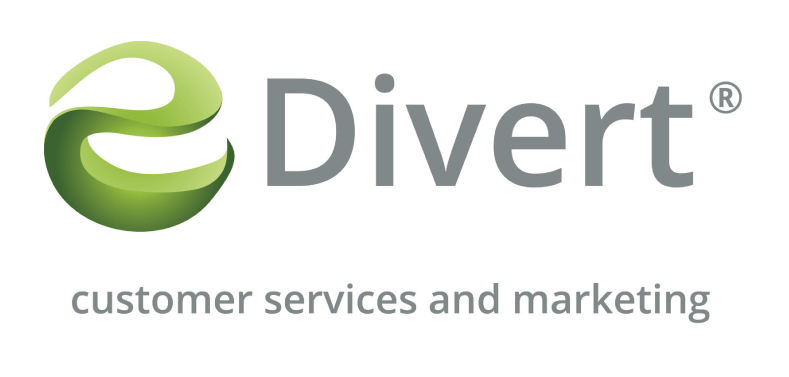
7 STEPS – SOCIAL MEDIA STRATEGY FOR B2B
Social media is one of the most powerful marketing tools for your business, if you use it correctly you can create a strong personal connection with your prospective customers. Marketers in companies that sell B2B often make a mistake of not having a social media plan in place. If this is you, don’t worry – our guide helps you to find out everything you need to know, so you can choose the right platform for your needs, find your audience and build a strong online brand that will encourage your B2B business to grow.
- Which social network is right for your B2B marketing strategy?
If your company is just starting out on the web and needs to pick a few social media networks to rule over, here is our guide to choosing the best platform(s) for your B2B business, and how to make the most out of them.
Facebook: Most people know this site. It’s hardly surprising, as it’s the biggest social network based on global reach and total active users. It builds brand loyalty and reputation. Establishes your business as an authority through interesting content and informational posts. Facebook is great for businesses who sell products and services to consumers, so B2C. But businesses, whose B2B marketing plan includes targeting small local businesses can get real results on this social media platform.
Twitter: This is a micro-blogging platform, where you have 140 characters to share your message. Twitter shares breaking news and quick updates. Businesses use it to promote new products, content, or brand contests, or to collect instant feedback from their audience. Twitter is used by individuals, celebrities, and businesses of any size, including the largest multinational corporations. Especially this last group uses it as a customer care platform.
LinkedIn: It has been described as Facebook for business, an electronic CV. But LinkedIn is much more than that. It doesn’t only allow individuals to share their job history. It’s also effective in allowing your business to build its profile and network by getting involved in discussions, job-postings, company descriptions, employer/employee research. LinkedIn is used by individuals, recruiters and businesses – especially B2B service providers. Many companies with a sales team use the Business Services for their lead generation and business development.
Google+: Google+ is kind of a black sheep in the world of social media. However here are some important reasons to rethink your decision and have a serious look at what Google+ for Business can do for you. In case you didn’t know this; everything you post on your Google+ for Business page is immediately indexed by Google. Google+ is a great platform for you, if you have a small to medium size business.
Instagram: This is a photo sharing platform, launched in October 2010. It has recently introduced video functionality, which allows users to post 15-second videos on the site. Instagram is for everyone who wants to share their lifestyle, food, fashion, personalities and luxury brands. You can add hashtags in the caption or in the comments of your post. If you add hashtags to a post that’s set to public, the post will be visible on the corresponding hashtag page. A great platform for businesses who sell products to consumers.
That’s a lot of social networks and there are even more that we won’t have time to discuss in this blog. Not all of these will work for your business. If you have limited resources, try to focus on one or two social media platforms when you start.
- Create social media objectives and goals
Like any good strategy, a strong purpose and a good set of objectives is important. This set of purpose and objectives has to be relevant and aligned to your overall aims and objectives. Focus on the S.M.A.R.T. strategy for goal setting to ensure your objectives are:
S – Specific
M – Measurable
A – Attainable
R – Relevant
T – Time-bound
One of the key things you need to decide is how you will use your social media presence. What you decide will affect the type of content you post and how you measure your success. Some common ways of using social networks include:
- Building buzz around your products or services
- Increasing brand awareness
- Driving more visitors to your website
- Increasing leads
- Finding out more about your customers and their needs
- Providing customer service
- Recruiting new talent
- Improving customer loyalty
In all cases, these objectives should be directly tied to your business goals, and they should be achievable. Also, make sure your objectives are time limited so set a date to your goal and size of the growth you are planning to achieve. Once you set your objectives, make sure you can measure them, find the right tools to track and analyze each one, so that you can quantify your progress. Not only will this let you know when you have arrived, it will also help you to spot problems early and adjust your course if you need to.
- Consistency is the key
Making the effort to keep your messages consistent can help you cultivate a loyal customer following. It is important to keep the content you share on social media channels consistent. Don’t bombard your users with the same content again and again. Keep the pace a bit varied; Twitter users and Facebook users expect very different posting frequencies from businesses. It is fairly common for businesses to post on Twitter four or five times per day, while on Facebook they may only post once or twice a day.
Fans also do not like being constantly advertised to. Get a bit creative and utilise the power of social media creatively. Facebook and Twitter can be much more than simple promotional streams. Use the power of effective frequency* with your posts so your followers will get to know your brand. There are some factors that impact your sharing frequency, including your type of industry, your recourses and the quality of the content of your posts.
*Click below to read our blog about Effective Frequency: https://edivert.co.uk/blog/item/effective-frequency-how-many-times-does-your-potential-customer-need-to-see-you-or-your-adverts-before-they-buy
- Time your social media posts
Create your plan to deliver your post around the time when your audience will definitely notice them. There is a lot of research available but they are normally conflicting. Timing is difficult to get exactly right, and a big part of this is because we all have different schedules and routines for using social media. The key to successful social media engagement is to post content during peak hours and days — for your audience. The best time to post is different on every social media network. Different businesses may find different days and times work best for them. In fact, timing often depends on the platform you’re using, how your target audience interacts with that platform, the region(s) you’re targeting, the content of your posts and your business goals. We researched the internet for a general point of view and we think that for a lot of business the times below will work well:
- Characterise your target market
Knowing your audience is important in creating an effective social media plan. It’s well worth spending time thinking about who you need to connect and engage with on social media. Who is interested in your product or service? Is there anything unique that could appeal to a certain audience?
Think about the next level, who those people might be associated with. Word of mouth is a powerful thing and it’s rife amongst social media folk, so connecting with those that are connected to your target audiences can be worthwhile.
Also identify your key influencers. These could be people that stand out within your communities, people that others listen to, people that create action. People with game-changing opinion and ideas. People who challenge the norm. Or simply people that talk sense.
- Test, evaluate and adjust your social media marketing plan
To find out what adjustments need to be made to your social media marketing strategy, you should constantly be testing. Build testing capabilities into every action you take on social networks. Track page visits driven by social media with Google analytics. Record and analyze your success and failures, and then adjust your social media strategy in response. The more you post, the more you’ll discover which content, timing, and frequency is right for you.
How will you know? It’s best to get a reporting tool. Most major social networks will have basic analytics built into the site; it’s just a little easier to seek and find this information from an all-encompassing dashboard. These tools can show you a breakdown of how each post performed in the important areas of views, clicks, shares, likes, and comments.
The most important thing to understand about your social media plan is that it should be constantly changing. As you attain goals, you may need to adjust them or find new goals for each network. New challenges might present themselves that you need to address. This is a plan that is meant to change, so be flexible and open to these changes.
- Build a content plan.
Great content will be essential to succeeding at social media. Your social media marketing plan should include a content marketing plan, comprised of strategies for content creation. Your social content should promote your business, convert readers, and generate profit. It should share ideas and stories from thought leaders in your industry or like-minded businesses and it should be based on personal interactions and build your business brand. Think about how you can deliver real value to your audience.
Content could be any of the following, depending on the social media network, your target audience and the product or services that you sell:
- blog posts
- infographics
- pictures
- videos
- (professionally appropriate) jokes
- quotes
- did-you-knows
- informative statistics
- quick tips
Also, keep in mind that you can’t just post your own content. You will also actively need to Like, Share and Follow others in order to create engagement. In addition, if you share content for a few weeks and then don’t post for a month, you won’t continue to grow. You must be continuously active on social media in order to grow.
A solid social media strategy is not for the light of heart. It will take you several hours to build your first plan. The next part is execution, which is even harder. You need to commit to following your strategy for months until you start seeing any real results, which still won’t be that impressive. Trust me though, if you keep at on a continuous basis, you will start seeing some great results. In the beginning, you are investing your time and resources so that you can get those results. Keep that in mind in the months ahead.
We hope we were helpful with this guide and you will be able to use this information when you are building your next social media plan. If you have any questions, or don’t have the time or resources to build your own social media strategy, please contact us on 01628 637 900 or e-mail us on info@eDivert.co.uk. Check out our website www.eDivert.co.uk


